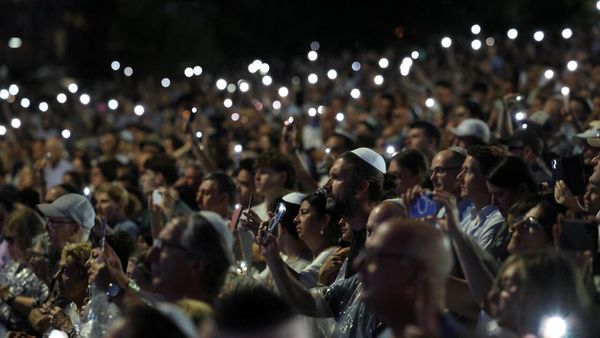The message could not have been clearer. In his 2016 manifesto for his first mayoralty Sadiq Khan laid out his position: “I will oppose building on the green belt, which is even more important today than it was when it was created.” How times have changed. Last week in a speech that represents one of the biggest shifts in planning policy in and around London since the post-war period, the Mayor was singing a different tune.
He admitted he had shifted his opinion of what he once described as the “sacred” status of the green belt, saying current protection is “wrong, out-of-date and simply unsustainable”.
So what has brought about this remarkable volte-face? The simple truth is that the housebuilding model in London is broken. Starts on new homes in Europe’s biggest metropolis have virtually ground to a halt. The figures are truly astounding.
According to sobering data from analysts Molior, private developers started work on just 1,210 new homes in the first three months of the year, a tiny sliver of the 88,000 new homes a year envisaged by the London Plan over the next decade.
The comparison with a decade ago is stark. In the first quarter of 2015 work started on 9,117 new unsold homes — a good indicator of developer confidence — at 100 major sites. In the first quarter of the year this had dried to a dribble, with a meagre 323 starts on new unsold homes, at just six sites.
It is the same gloomy story for affordable housing, most of which is delivered by private developers working with housing associations and City Hall. Latest GLA data shows work began on just 4,411 new homes designated affordable in the year to April, up slightly from the previous year when the total was just 3,244, but hugely down on the 27,824 in 2022/23.
So what has gone wrong, why have we stopped building homes in London? The question is more than an academic one. The need in London is as acute as it has ever been, not just for those currently without permanent housing, stuck on ever-lengthening council waiting lists.
But as the Mayor recognised in his speech on planning last week, an entire generation risks being locked out of the security enjoyed by their parents. As he put it: “We have young professionals stuck living in their childhood bedrooms for years on end; Londoners having to endure cold, damp accommodation that isn’t fit for human habitation; couples reluctantly moving out of the capital to start a family; and London primary schools closing because young families have been priced out of the area.”
There could also be a severe political cost to be paid. Keir Starmer has little chance of fulfilling his promise of building 1.5 million new homes over the course of the parliament if London’s construction sector is not firing on all cylinders. Labour will pay a heavy penalty at the general election ballot boxes in 2029 if they do not go into the campaign able to say they have delivered on the housing pledge at the heart of their offer to the country in 2024.
Experts say housebuilding has become so alarmingly bunged up for a number of reasons, some external and unavoidable and some entirely self-inflicted. Tim Craine, the founder and director of Molior London, said: “When it comes to London housebuilding, all the stars are aligned in exactly the wrong way. The cost of bricks and mortar is inflated, the costs of labour is inflated, interest rates are also inflated, there is all manner of inflation. When the costs are all stacked up like that there is nothing left in the margin to be divvied out.”
Planning is of course another bugbear. Latest figures from specialist construction intelligence firm Barbour ABI show that the value of residential planning approvals halved from 2015 t 2024.
Ed Griffiths, chief data analyst at Barbour ABI, said: “There are tens of thousands of potential newbuilds in the London area that have been given planning approval but that doesn’t mean that they are going to be built anytime soon.
“It comes down to a range of factors that affect the viability of newbuilds – construction expenses, interest rates, high land costs and of course labour shortages – and if that makes it too expensive to build, them contractors will postpone. Margins are always tight, and it comes down to making a profit or loss.”
I’ve got £1bn invested but I can’t start building because of Gateway 2
But on top of that are also a myriad well-intentioned political decisions, all taken for good reasons, that have stopped the numbers adding up. Housebuilders are having to meet ever more demanding regulatory requirements, all of which nibble away at schemes’ viability. There is particular concern over what are known in the trade as “Gateway 2” approvals.
This is the sign-off that a developer needs for any building over seven storeys high from the Building Safety Regulator set up by Michael Gove in 2022 following the Grenfell disaster. Without that signature, construction cannot begin, but there are huge backlogs that are strangling progress on construction. As one exasperated London housebuilder boss put it: “I’ve got £1bn invested in London but I can’t start building anything because of Gateway 2.”
The rich foreigners who piled into central London are selling up and quitting the UK
A model for London housebuilding that proved particularly successful, if unpopular with the public, in the early years of the century — selling homes off-plan to foreign investors to underpin the funding of the scheme — no longer works. It has been destroyed by ever higher stamp duty and other tax rates imposed by chancellors looking for an easy revenue hit and egged on by public disquiet over empty “buy to leave” developments. The coup de grâce was Jeremy Hunt’s abolition of non-dom status.
Be careful what you wish for. Now the rich foreigners who piled into central London in the years of plenty are selling up and quitting the UK. There will be few violins, but they also helped pay for the affordable housing that London now simply cannot produce.
Ian McDermott, vice chair of the G15 group of housing associations and chief executive of one of London biggest players in the sector, Peabody, called the current situation a “perfect storm”. He said: “This is the most challenging environment we’ve ever worked in. Standards have changed since Grenfell, the cost of building has gone up and the shortage of labour is a real problem.
“Our ability to support and fund development has come down because we’re spending more money on building safety and maintenance and management of homes.”
According to Craine the situation is now so entrenched that “it will take two decades to sort out and in that time the quality of life in London will go down”.
So can easing planning controls on the green belt unblock the log-jam? According to property experts it will help, but it will take time and can only be part of the solution.
Adam Cradick, executive director at agents CBRE, said: “The combination of viability challenges plus planning and regulatory delays has resulted in a total collapse in supply of new homes across the capital. So while green belt release is a helpful part of the solution, further urgent steps still need to be made.”
A spokesperson for the Mayor said: “The disastrous inheritance from the previous government has left national housebuilding on its knees, with developers predicting housebuilding could fall to the lowest level since the Second World War.
“The Mayor is determined to work hand-in-hand with the Government to support their ambition to get Britain building again. Last week he announced that he is exploring how parts of the green belt can be used for house building, as well as investigating different approaches to increase the number of small and medium sized building companies, who in decades past have been far more prominent in delivering London’s new homes.”
Everyone who cares about London’s future will have to hope that his efforts will prove successful, because without enough new homes the capital simply cannot thrive.







